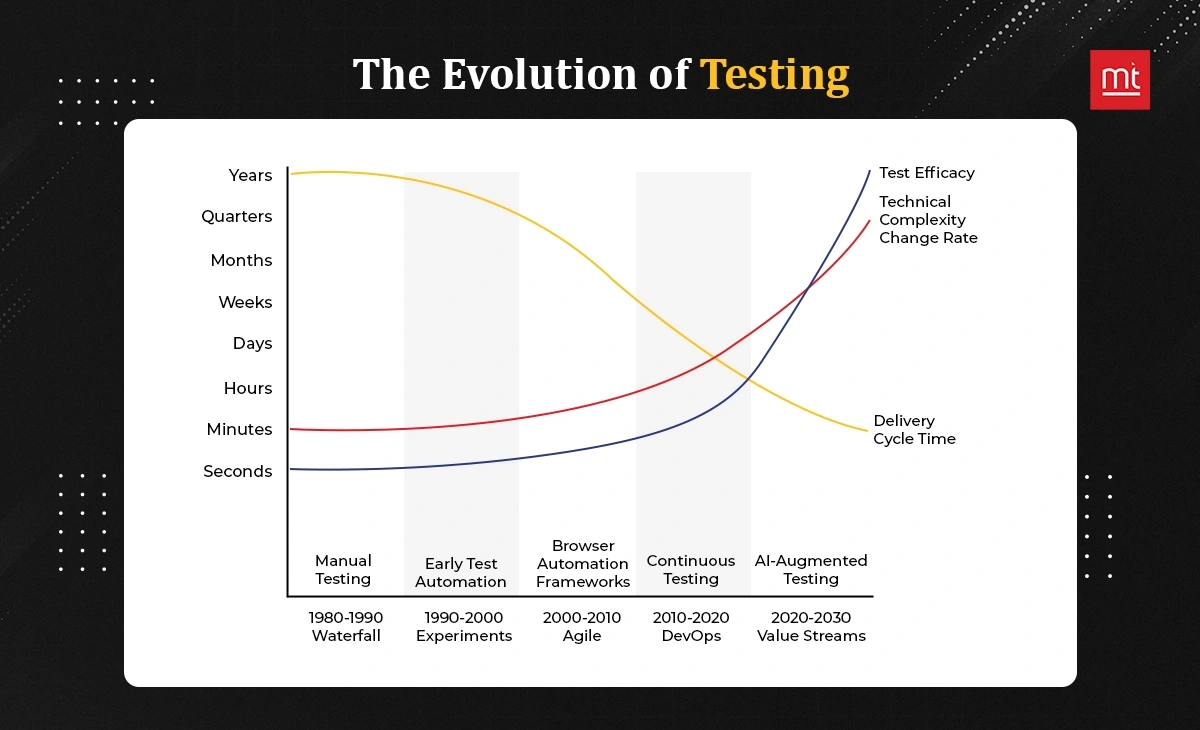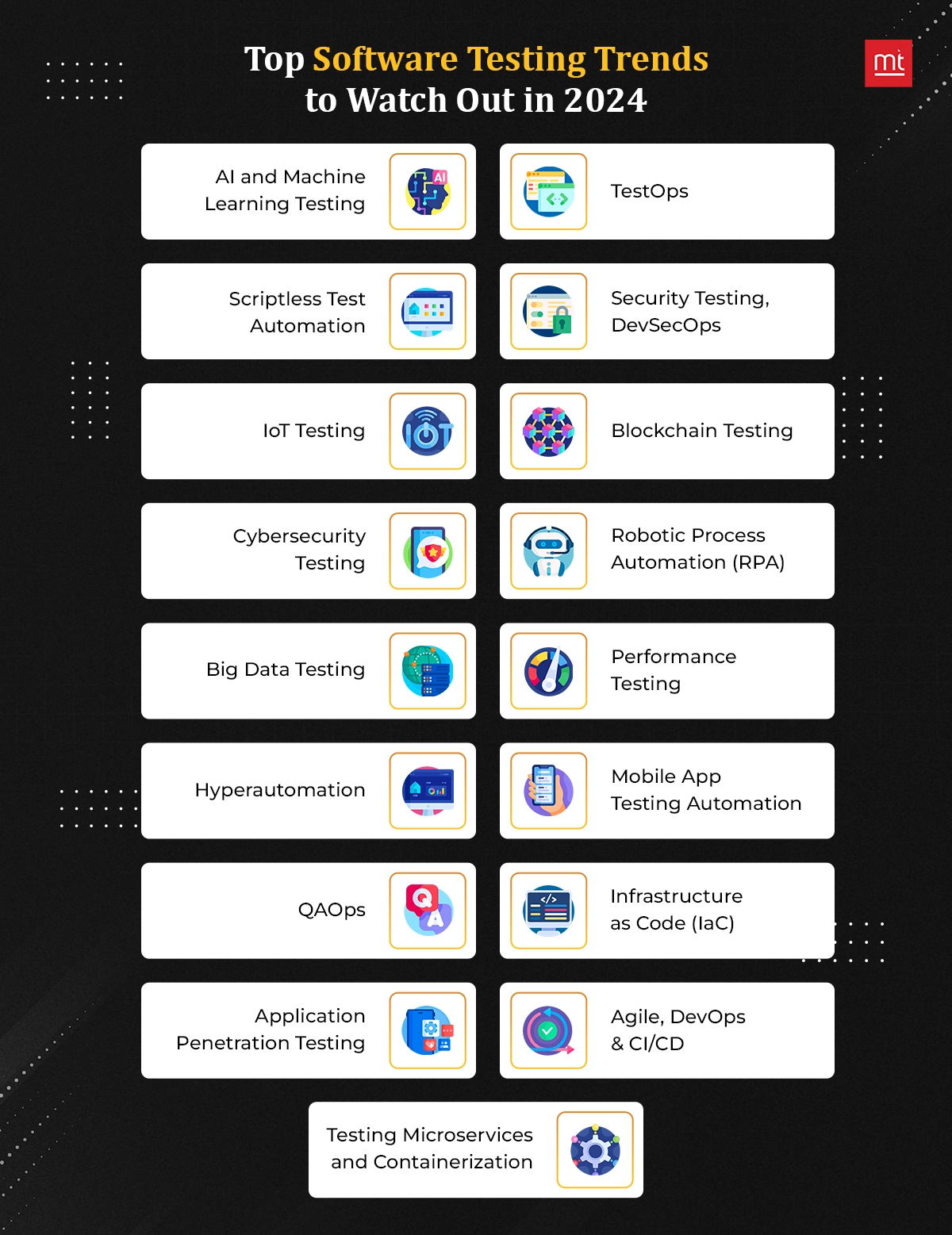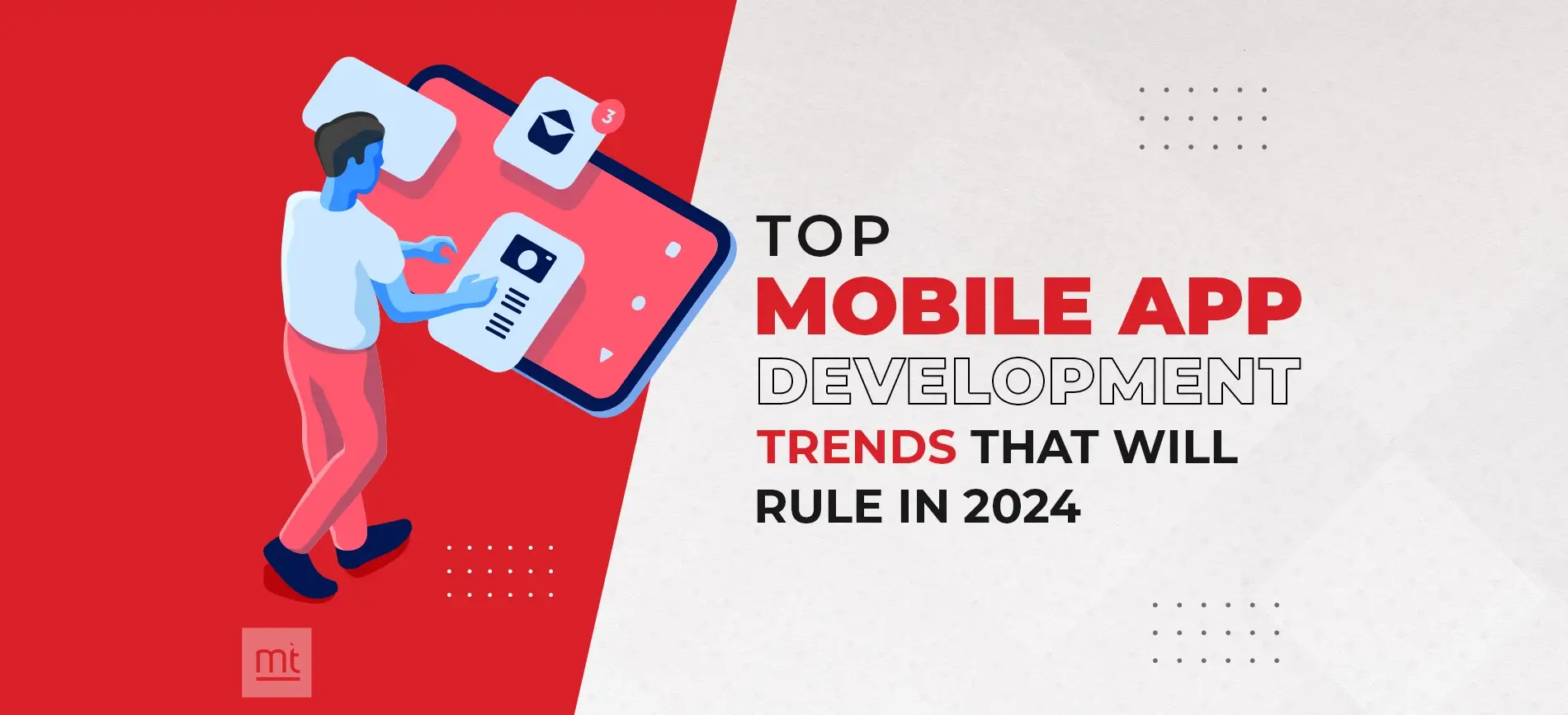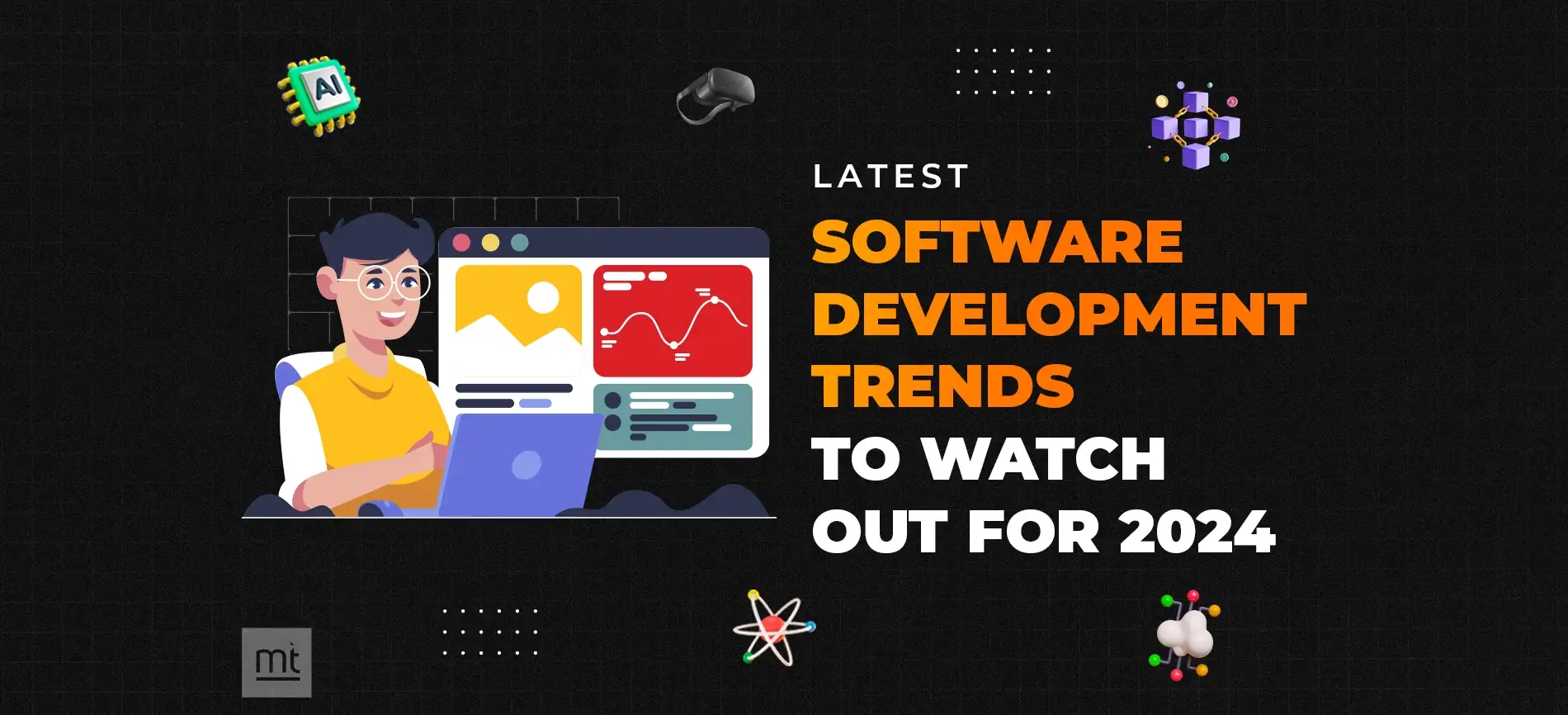Introduction:
Software developers and testers are definitely evergreen in this evolving technological world. Testing is crucial in the software industry, as it ensures that developers deliver a fully functional and accurate product to clients. You might be surprised to read that the current value of the Software Testing market is 45 billion dollars and is expected to grow rapidly by 5% until 2032. Forbes research also says that the use of AI and ML is likely to increase by 37.3% from 2023 year, and hence, quality assurance is becoming important day by day, 24% of companies have experienced increased ROI after including automation testing in their business.
Gone are the days when industries used to manually test softwares and apps. Today most industries have shifted to automation testing and have impacted differently. Let's have a look at the graph below to understand software testing trends and how the testing evolution shifted to AI and automation for better testing results.

It's very important for every software tester that the final product is free from error. The testing phase includes six phases: requirement analysis, Test planning, Test case development, setting up a testing environment, and lastly, execution and reporting.
As we have entered 2024, it's important to keep up with the Latest Trends in Software Testing to meet the accurate needs of users. Agile, DevOps,shift-left testing, IOT, and performance testing are still on trend, but many more trends in software testing have been added recently. If you are looking to hire a software tester or software development company, then this article will help you to understand the software trends in 2024 to look out for and find the best fit for your organization.
Why is it Important to Stay Updated on Software Testing Trends?
It is important for every software development company to keep updated with the trends in software testing. It helps testers identify the issues effectively and develop high-quality software for users. Moreover, testers can remain competitive and relevant in the ever-changing technology world. It helps them to know about new procedures and tools, which helps to improve their skills, work faster, and produce higher-quality goods.
A Brief Overview of the Software Testing Landscape and Challenges Facing QA Teams
Every software development leads to different challenges depending upon the type of project and client requirements. Below are some of the most common challenges faced by QA teams.
- Lack of effective testing: Not every team member has pro testing skills; hence, it can create a gap between the user demand and available professionals, creating trouble during software testing.
- Lack of automation skills: Most testers still rely on manual testing and have problems adopting automation methods; this can be one barrier.
- Poor documentation: not having proper communication between the developer and the tester can lead to poor documentation, which will eventually affect the entire development as well as the testing cycle.
- Lack of time: Work pressure is common in the corporate world. Many clients demand fast delivery of software which causes a burden on the testing team and makes the testing process hectic and inaccurate.
What are the Thriving Software Testing Trends for 2025?
It's important to align with the software trends for enhanced efficiency and ensure zero error before software delivery. Below, we have researched about the thriving software trends for 2024.

1. AI and Machine Learning Testing
AI and machine learning help predict issues in advance. You can optimize the testing process by verifying the functionality, data inputs, and outputs of AI algorithms and machine learning models and making sure they perform accurately and reliably through testing.
Benefits:
- Find new trends and patterns regarding product and business models.
- It supports predictive analysis.
- Automatically writes error-free test cases and generates API test generation.
Challenges:
- It needs maintenance, and you have to over-rely on AI.
- It lacks in human context understanding.
- Costly implementation.
2. TestOps
TestOps is used across various industries to effectively integrate testing with the software development and operations processes. It makes testing procedures, increases cooperation, and ensures consistent delivery of high-quality software.
Benefits:
- It is consistent and speeds up your testing process.
- The use of an agile environment is a plus, as it works on every small piece of code.
- Seamless integrations and promotes continuous delivery.
Challenges:
- It might perform slowly when running tests with large amounts of data.
- You need a trained testing team for testOps; otherwise, it can be complicated.
3. Scriptless Test Automation
This involves using low-code or no-code platforms to automate testing processes without the need for extensive scripting; hence, it makes testing more accessible and efficient.
Benefits:
- It doesn't require coding or scripts to be added; hence, it is suitable for non-tech users.
- It has a user-friendly interface; hence, test cases can be easily modified.
- It supports faster test creation and execution.
Challenges:
- Dependent on the tool. Hence, you might need to get help from a tool vendor for future changes.
- There is a limited script customization.
4. Security Testing, DevSecOps
Incorporating security testing throughout the development process with DevSecOps, ensuring that applications are secure by design.
Benefits:
- It helps in early detection and mitigation to identify the issue at the initial stage.
- It supports improved collaboration between developers, testers, operation experts, and other team members.
Challenges:
- It might impact your security as not having vulnerability checks can be risky.
- Sustaining a DevOps environment is hard, and there is no security assurance.
5. IoT Testing
This involves verifying the functionality, interoperability, and security of devices and systems within the Internet of Things (IoT) ecosystem.
Benefits:
- It helps to perform effectively with the help of accurate communication via devices and sensors.
- It is a scalable option because it is compatible with most devices.
- It is helpful in beating competitors by preventing the need of rework.
Challenges:
- The initial cost of software testing can be expensive.
- As it includes integrating smart gadgets, this could breach your privacy.
6. Blockchain Testing
Validating the integrity, security, and performance of blockchain networks and applications, ensuring trust and reliability.
Benefits:
- It ensures maximum optimal performance due to its wide test coverage.
- It meets the security and trustworthiness of the software or apps.
- It helps to reduce costs because users can use exciting frameworks.
Challenges:
- You might suffer from a shortage of tools.
- You need proper blockchain technology knowledge to implement a test case strategy.
7. Cybersecurity Testing
Assessing the security posture of applications and systems to identify vulnerabilities and mitigate potential cyber threats.
Benefits:
- Amplifies the system's security by recognizing potential vulnerabilities.
- Enhances credibility by securing sensitive data.
- Minimizes the risk of cyber threats, thus preventing financial fraud.
Challenges:
- To be up to date with the latest technologies and software to aid in cyber security testing.
- Routine testing and frequent updates of both the software and the team.
8. Robotic Process Automation (RPA)
RPA is the best testing for automating repetitive tasks and processes using software robots. It also includes the use of cognitive computing and IOT to ensure software accuracy.
Benefits:
- Automates repetitive tasks, reducing the human workload
- Reduces the chances of any human errors
- Human resources are free to focus on strategic decision-making
Challenges:
- Improper planning and faulty execution of RPA can deliver catastrophic results.
- RPA integration can cause complexities in smoothly functioning systems and workflows.
9. Big Data Testing
It is about verifying the quality, dependability, and performance of massive amounts of data collected and analyzed by applications and systems.
Benefits:
- Big data testing can help get accurate and consistent data.
- Experts can identify key patterns and insights for better decision-making.
- You can also optimize data-driven processes and applications.
Challenges:
- Managing and testing vast volumes of data is the real challenge.
- You must balance testing speed properly in rapidly changing data environments.
10. Performance Testing
it is about evaluating the speed, responsiveness, and scalability of applications under various conditions to ensure optimal performance.
Benefits:
- Performance testing excels in software applications to meet performance expectations under various conditions.
- It is scalable, and the tester can identify bottlenecks and scalability issues early in the development cycle.
- Tester can create scripts to test specific functionality.
Challenges:
- Comprehensive planning is required to go through realistic test scenarios.
- Testing real-world features and other load conditions can be difficult.
11. Hyperautomation
Hyperautomation requires the integration of multiple automation technologies, including AI, RPA, and machine learning, to automate end-to-end business processes comprehensively.
Benefits:
- Combines various automation technologies like AI and ML to streamline and optimize business processes.
- Helps in automating end-to-end workflows across multiple systems hassle-free.
- It is easy to adapt to the organization and respond quickly to changing business needs.
Challenges:
- Integration challenges across different automation tools and platforms.
- Potential resistance from employees and stakeholders due to rapid changes in workflows.
12. Mobile App Testing Automation
Automating the testing of mobile applications across different devices, platforms, and network conditions to ensure functionality and user experience.
Benefits:
- Mobile app testing will get faster speed up testing cycles and reduce time-to-market for mobile applications.
- You can have a consistent functionality and user experience across different devices and platforms.
- Identifies and addresses issues early in the development process.
Challenges:
- Fragmentation of mobile devices and operating systems.
- Ensuring comprehensive test coverage for various functionalities and features.
- Balancing automated and manual testing approaches to achieve optimal results.
13. QAOps
Integrating quality assurance (QA) processes seamlessly into the development pipeline with a focus on automation, collaboration, and continuous improvement.
Benefits:
- Integrates quality assurance practices seamlessly into the DevOps pipeline.
- Facilitates collaboration between development, testing, and operations teams.
- Enables continuous testing and feedback loops for rapid and reliable software delivery.
Challenges:
- Cultural shifts and resistance to change within organizations.
- Requires adoption of new tools and processes for effective implementation.
- Ensuring consistency and accuracy in testing environments across development and production.
14. Infrastructure as Code (IaC)
It helps manage and provision IT infrastructure through code, which is essential for automated deployment, scaling, and resource management.
Benefits:
- Iac is best at streamlining management and automating the entire IT infrastructure.
- It is scalable and can be expanded to match the consistency of your IT framework.
- Minimizes the scope of manual errors in the framework, thus facilitating a faster deployment
Challenges:
- The team needs to be pro in coding and using the latest infrastructure management tools
- It can be a bit complex to meet its security standards in automated setups without getting compromised.
15. Application penetration testing
This includes executing cyber attacks to detect and address weaknesses in applications and systems, hence improving security measures.
Benefits:
- Helps you to detect susceptibility in the developed app.
- Offers security against cyber fraud, data breaches, and unauthorized access.
- It helps create a robust security system by validating security measures.
Challenges:
- The team should be familiar with a range of security testing techniques.
- Users with intermediate levels might have issues in maintaining a balance by testing via probable disruptions to live systems.
16. Agile, DevOps & CI/CD
it includes using continuous integration/continuous deployment (CI/CD) pipelines, agile approaches, and DevOps techniques to shorten development cycles and enhance software quality.
Benefits:
- Software developments and delivery cycles are over in record time
- Strengthens the alliance of operations, developments, and QA teams.
- Improves credibility through better software quality and reliability
Challenges:
- Coping up with major cultural and organizational changes to sustain Agile and DevOps principles.
- Proper integration of automated CI/CD pipelines across different environments
- Creating a balance between speed and QA to ensure adequate test coverage.
17. Testing Microservices and Containerization
Testing individual microservices and containerized applications to ensure functionality, performance, and interoperability within distributed systems.
Benefits:
- Facilitates swift development and deployment of applications
- Managing and Scaling distributed systems becomes undemanding
- Improves the workflow in cloud-native environments
Challenges:
- Testing interactions of microservices and dependencies is difficult
- Creating a compatible and consistent environment across containerized environments
- Strategizing and implementing appropriate tools for microservices frameworks
Why does ManekTech Stand Out in Software Testing Excellence?
Being a leading software testing company in USA, Manektech is committed to delivering top-notch independent services. We are an experienced team that can help you provide error-free and high-performance solutions within budget, and you can definitely expect on-time delivery when you work with Manektech. We are focused on implementing the best QA practices to measure product quality and make sure that we meet every single client requirement. If you are searching for software testing and quality assurance services, choose Manektech to deliver excellence with a good user experience.
Conclusion
I hope you found this blog useful in understanding the latest software trends thriving in 2024. Above, we have mentioned almost all the software testing trends that are important for delivering well-performing software. If you belong to the software development industry, it is crucial to stay tuned about the changing software testing trends to meet users' changing needs and predict the future of software testing.
At Manektech, we have a highly skilled team of developers and testers who are capable to develop complex software and apps. Feel free to get a quote today for your development and testing requirements.

FAQs:
1. Which software testing tools are in demand in 2024?
Selenium, Appium, Cucumber, TestNG, JUnit, PyTest, Postman, JMeter, and Cypress are some of the most extensively used testing tools 2024. Selenium is most demanded because it is open-source and is perfect for web app testing and other automation tasks.
2. What is the future of testing in the IT world?
Automation and artificial intelligence are the future of testing, as most industries focus on improving user experience.
3. What is the latest trend in software testing?
AI and Machine Learning are the current trends in software testing, as they automate tests and detect problems before they occur. Moreover, most industries are also testing smaller portions of software (known as microservices) and using particular tools to manage testing more efficiently, resulting in a smoother overall experience.
4. What type of testing is currently in highest demand?
There are several types of testing that are currently in demand, but low code testing and automation testing come at the top as they fulfill most business criteria
About Author
Subscribe to Our Newsletter!
Join us to stay updated with our latest blog updates, marketing tips, service tips, trends, news and announcements!





















